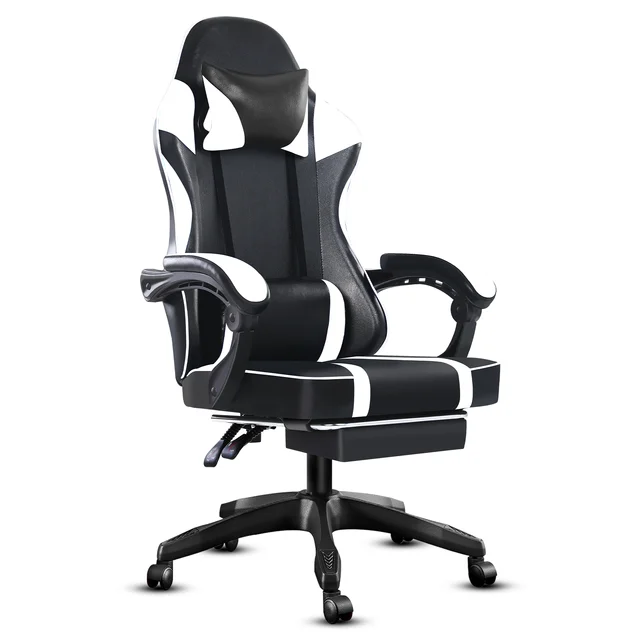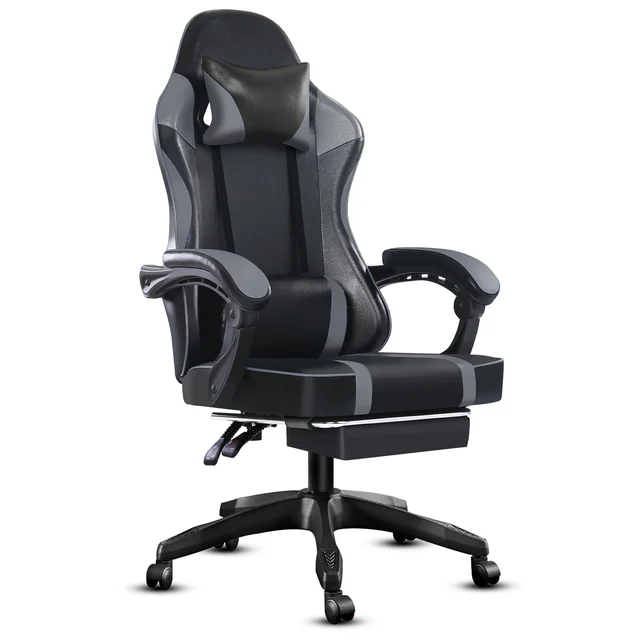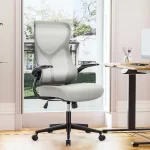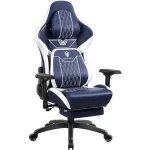An office chair that sinks can be a frustrating problem, affecting your comfort and productivity. Fortunately, fixing a sinking office chair is often a manageable task with the right approach and tools. In this comprehensive guide, we’ll walk you through the process of diagnosing and fixing the issue with your office chair. From understanding the root causes to step-by-step repair instructions, you’ll have your chair working properly in no time.
Understanding Why Office Chairs Sink
Common Causes of Chair Sinking
An office chair that sinks typically has a problem with the gas lift mechanism. This component is responsible for adjusting the height of the chair and keeping it at a fixed level. Over time, the gas lift can lose its ability to hold pressure due to wear and tear, leakage of the gas, or damage to the internal components. Another common cause can be a faulty or worn-out seat cylinder, which affects the chair’s ability to maintain its height.
Identifying Symptoms of a Faulty Gas Lift
To determine if the gas lift is the issue, observe the chair’s behavior. If you find that the chair sinks when you sit on it or if you frequently need to readjust the height, these are strong indicators of a malfunctioning gas lift. Additionally, if you hear any unusual noises or experience difficulty adjusting the chair’s height, it may further confirm the need for repair or replacement.

Tools and Materials Needed
Essential Tools for the Repair
Before you start the repair process, gather the necessary tools. You’ll need a few basic items:
- Wrench or Socket Set: For removing and tightening screws and bolts.
- Screwdriver: To take apart components if needed.
- Pliers: Useful for gripping and manipulating small parts.
- Lubricant: To ease the movement of parts and prevent squeaks.
Additional Materials
In addition to tools, you might need replacement parts depending on the extent of the damage:
- Replacement Gas Lift Cylinder: If the current cylinder is damaged or worn out.
- Lubricating Oil: For maintenance and smooth operation.
- Replacement Chair Base or Casters: If these parts are also worn out or damaged.
Step-by-Step Repair Instructions
Step 1: Remove the Chair from the Base
Begin by flipping the chair over to access the base. Most office chairs have a simple mechanism that allows you to detach the seat from the base. Use a wrench or socket set to remove any bolts or screws holding the seat to the base. If your chair uses a clip or pin, gently pry it open with pliers.
Once the seat is detached, you should be able to see the gas lift cylinder and other components more clearly. Take this opportunity to inspect the chair base and gas lift for any obvious signs of damage or wear.
Step 2: Inspect and Replace the Gas Lift Cylinder
With the chair seat removed, focus on the gas lift cylinder. This component is usually held in place by a collar or clip. Examine the cylinder for any visible leaks or damage. If the gas lift appears to be faulty, you’ll need to replace it.
To remove the old gas lift, loosen and remove any retaining clips or rings. Gently pull the cylinder out of its socket. Insert the new gas lift cylinder in the same manner, making sure it is securely seated. Reattach any clips or rings to hold it in place.
Step 3: Reassemble the Chair
After replacing the gas lift cylinder, it’s time to reassemble the chair. Align the seat with the base and secure it using the screws or bolts you previously removed. Make sure all connections are tight and secure. If your chair has an additional mechanism for adjusting height, ensure it is functioning correctly before moving on.
Once reassembled, test the chair to ensure that the height adjustment works smoothly and that the chair no longer sinks when you sit on it. Adjust the height to your preferred level and check that it remains stable.

Preventive Maintenance Tips
Regular Inspections and Adjustments
To prevent future issues with your office chair, perform regular inspections. Check the gas lift mechanism periodically to ensure it is functioning properly. Look for any signs of wear or damage, and address any issues promptly before they escalate. Additionally, adjust the chair’s height and other settings regularly to ensure that all components remain in good working order.
Lubrication and Cleaning
Regular maintenance can extend the life of your office chair. Lubricate moving parts, such as the gas lift and swivel mechanism, to prevent squeaks and ensure smooth operation. Clean the chair’s surface and components to remove dust and debris, which can contribute to wear and tear. Follow the manufacturer’s recommendations for cleaning products and techniques to avoid damaging the chair.
When to Seek Professional Help
Assessing the Need for Professional Repair
In some cases, the problem with your office chair may be beyond a simple DIY fix. If you’ve replaced the gas lift and the chair still sinks or if you encounter issues with other components, it might be time to seek professional assistance. Professional repair services can diagnose and address more complex issues, ensuring that your chair is restored to optimal functionality.
Choosing a Professional Repair Service
If you decide to hire a professional, look for a reputable repair service that specializes in office furniture. Check reviews and ratings to find a service with a track record of quality work. Ensure that they offer a warranty on their repairs, so you have peace of mind knowing that any issues will be addressed if they arise.
Troubleshooting Common Issues
Difficulty Adjusting Chair Height
If you find that the height adjustment is still problematic after replacing the gas lift, the issue might be with the adjustment mechanism itself. Check if any parts are obstructed or misaligned. Sometimes, the mechanism can become clogged with dust or debris, so cleaning it thoroughly may resolve the issue. If the mechanism appears damaged, it may need replacement or professional repair.
Chair Wobbling or Uneven Movement
A wobbling chair can be due to several factors, including a loose base or damaged casters. Inspect the chair base and casters for any signs of wear or damage. Tighten any loose screws or bolts, and replace any broken or uneven casters. Ensuring that all parts are securely fastened and in good condition will help stabilize the chair.
Upgrading Your Office Chair
Considering Ergonomic Enhancements
If you’re looking to enhance the comfort of your office chair beyond basic repairs, consider adding ergonomic upgrades. Features like adjustable armrests, lumbar support, and a tilt mechanism can improve posture and reduce strain. Look for ergonomic accessories or replacement parts that can be added to your existing chair for a more personalized comfort experience.
Exploring New Chair Options
If your office chair is beyond repair or if you want to upgrade, exploring new chair options may be worthwhile. Consider factors such as adjustability, support features, and material quality when choosing a new chair. Investing in a high-quality ergonomic chair can provide long-term comfort and prevent future issues.

Conclusion
Recap of the Repair Process
Fixing an office chair that sinks is a manageable task if you follow the correct steps. Start by understanding the common causes of chair sinking and gather the necessary tools and materials. Proceed with the step-by-step repair instructions, including removing the chair from the base, inspecting and replacing the gas lift cylinder, and reassembling the chair. Regular maintenance and prompt attention to any issues can help prevent future problems.
Final Tips for Chair Maintenance
Maintaining your office chair involves regular inspections, lubrication, and cleaning. By staying proactive and addressing issues promptly, you can extend the life of your chair and ensure a comfortable and productive workspace. If you encounter persistent problems, don’t hesitate to seek professional help to restore your chair to its optimal condition. With proper care, your office chair will continue to provide the support and comfort you need for years to come.


